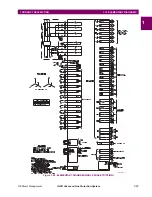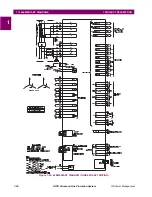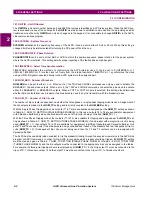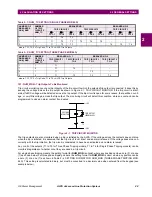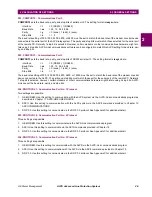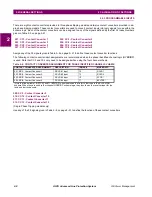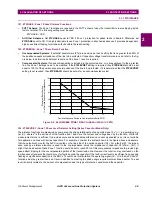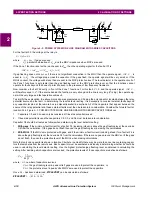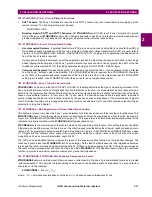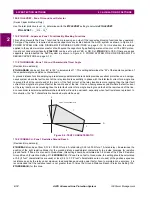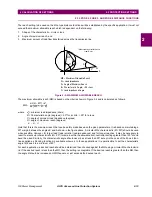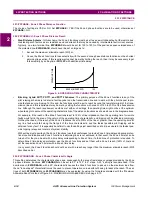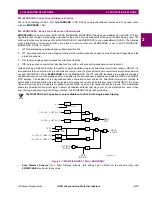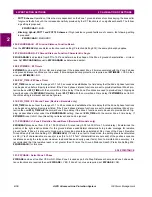
GE Power Management
ALPS Advanced Line Protection System
2-1
2 CALCULATION OF SETTINGS
2.1 INTRODUCTION
2
2 CALCULATION OF SETTINGS 2.1 INTRODUCTION
2.1.1 DESCRIPTION
There are a number of settings that must be made in the ALPS relaying system. These settings are divided into two catego-
ries, with each category divided into the sub-groups shown below:
a) GENERAL SETTINGS CATEGORIES
•
CONFIGURATION
•
COMMUNICATIONS
•
OSCILLOGRAPHY
•
EQUIPMENT DUTY
•
PROGRAMMABLE INPUTS
b) PROTECTION SETTINGS CATEGORIES
•
Z1DISTANCE
•
Z2DISTANCE
•
Z3DISTANCE
•
Z4DISTANCE
•
CURSUPVISN
•
OVERCURRNT
•
VOLTAGE
•
BLK RECLOS
•
LINEPICKUP
•
REMOTEOPEN
•
LINEOVERLD
•
SCHEME
•
SCHMTIMERS
•
LINE INFO
•
SCADA_DTA
•
OS BLOCKING
•
OS TRIPPING
•
RECLOSER
•
NONCRIT_AL
•
OUTPUTS
The sub-categories (defined by their mnemonic) are given in the order that they appear when scrolled in the display pro-
vided on the front of the ALPS. Up to four separate and distinct Protection Settings Groups can be programmed and
stored in the ALPS. Selection of the settings group to be used can be made via the keypad, through the communications
link or through external contacts applied to selected programmable inputs. The General Settings category applies to all
schemes and all settings groups regardless of which settings group is selected.
The General Settings category will be discussed first, followed by the Protection Settings category. Scheme specific
requirements (when applicable to a particular setting) will be discussed when that setting is described. A blank settings
form is provided at the end of this section, which may be copied and used to record the settings for any application.
All of the settings used in the ALPS are listed in Table 2–11: PROTECTION SETTINGS GUIDE on page 2–57. and Table 2–
12: GENERAL SETTINGS GUIDE on page 2–64. These tables show setting ranges for both 5 A and 1 A rated systems.
Note that each specific setting in a subgroup has a distinctly assigned number in addition to a unique mnemonic. These
identification numbers can be used to facilitate entering or changing a setting via the keypad or through the ALPS-Link
communications program.
All settings must be entered in secondary values (ohms, amperes, volts) unless per unit (p.u.) or other val-
ues are called for.
This calculation of settings section can be used to determine and calculate the settings for a particular application. Two
methods can be followed:
1.
Work through this section, setting-by-setting, and manually record each setting in the blank forms provided (see Sec-
tion 2.5.4: PROTECTION SETTINGS DATA SHEETS on page 2–66 and Section 2.5.5: GENERAL SETTINGS DATA
SHEETS on page 2–73). Once the form is completed, enter the settings individually via the keypad located on the front
of the ALPS or through the ASCII communications port (a long and laborious process and not recommended). Alterna-
tively, use the ALPS-Link communications program to access and modify an existing settings file (a sample settings file
is included on the program disk). This file can then be downloaded to the ALPS system and saved for possible modifi-
cation in the future.
2.
Use the ALPS-SET program (the easiest method when first starting). This program goes through each category set-
ting-by-setting and allows specific settings to be determined and stored into a file which may then be saved and down-
loaded into the ALPS via ALPS-Link. This file will then be available for future modification if required.
NOTE













